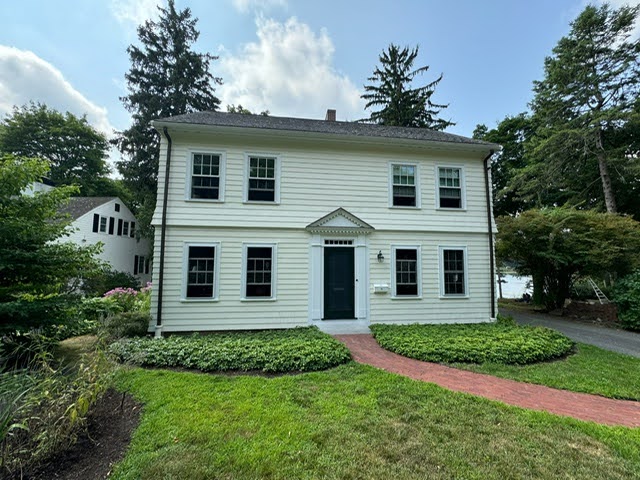A fresh coat of paint can do wonders for your home’s exterior—enhancing curb appeal, protecting siding, and boosting property value. But before the first drop of paint hits the wall, preparation is key to achieving long-lasting and professional results. At Gallagher Painting, we believe that the right prep work ensures not only a flawless finish but also durability that stands the test of time.
Whether you’re repainting after years of wear or switching up your home’s look, this guide walks you through everything you need to do before painting begins.
1. Inspect the Exterior Paint Thoroughly
Start by walking around your home and inspecting all surfaces to be painted. Look for issues like:
- Peeling or flaking paint
- Mold or mildew spots
- Cracked caulking around windows or trim
- Damaged siding or wood rot
Addressing these problems before painting prevents them from getting worse and ensures better adhesion of the new paint.
2. Clean All Surfaces
Painting over dirt, grime, or mold can cause the new paint to bubble or peel prematurely. For best results, pressure wash the surfaces to remove:
- Dust and dirt
- Pollen and mildew
- Old chalky paint residue
Use a garden sprayer with a mixture of water and mild detergent for spots where a pressure washer isn’t safe. Be sure to let everything dry completely before moving on to the next step. For detailed cleaning tips, check out Bob Vila’s guide to exterior paint prep.
3. Protect Your Landscaping and Fixtures
Take time to protect areas that shouldn’t be painted:
- Cover shrubs, flower beds, and grass near the house with drop cloths.
- Use painter’s tape and plastic sheeting to shield windows, lights, and utility boxes.
- Remove outdoor furniture and decorations to create a safe working area.
This preparation not only makes the job cleaner but also protects your property during the process. Don’t forget to turn off outdoor lights and sprinklers during the project.
4. Scrape and Sand Problem Areas
Loose paint must be removed before applying a new coat. Use a paint scraper to get rid of flaking sections, then sand the area to smooth out the surface. Feathering the edges between old and new paint helps create an even, professional look.
This stage may seem tedious, but it makes a huge difference in the final outcome. For tool recommendations and safety tips, visit This Old House’s guide on exterior paint prep.
5. Make Repairs and Apply Caulking
Before priming, patch holes or cracks in the siding or trim with wood filler or caulk. Apply fresh caulking around windows, doors, and joints to prevent moisture intrusion.
Allow the repairs to cure fully, then prime bare wood or patched areas to ensure paint adhesion and uniformity.
6. Prime and Paint
Once the surface is fully dry, it’s time to prime. Priming ensures better coverage and adhesion, especially on bare wood or repaired spots. After the primer dries, apply the topcoat—ideally two coats for long-term durability.
For homeowners working with professionals like Gallagher Painting, this is the stage where our team steps in to deliver a smooth, high-quality finish tailored to your home’s specific needs and style.

Final Thoughts
Preparation is the foundation of every successful exterior paint job. From cleaning and scraping to priming and protecting your landscaping, the steps you take before painting will directly impact the results. At Gallagher Painting, we bring years of experience and craftsmanship to every project, ensuring your home stands out for the right reasons.Ready to refresh your exterior? Visit Gallagher Painting’s website to request a free quote and learn more about our full-service painting solutions.

Mike Gallagher is the owner and operator of Gallagher Painting, an esteemed painting company renowned for its meticulous attention to detail and artistic approach. A veteran in the industry, Mike honed his skills while working with prestigious painting companies across New Jersey, Connecticut, and Massachusetts. His love for the craft propelled him to establish his own business, with a core objective to continue delivering work that adheres to the highest standards. Known for his perfectionism and artistry, Mike’s signature is evident in every project he undertakes. Today, he leads Gallagher Painting with the same dedication and commitment to excellence that has defined his career.

